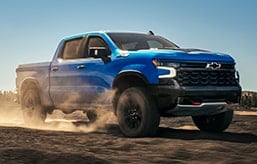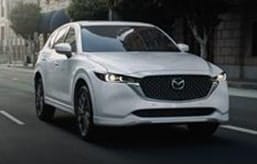- A federal investigation into Tesla's optimistic range estimates was launched last year.
- The result of that probe is lower EPA range estimates for most of Tesla's lineup.
- In our testing, Edmunds was never able to achieve the EPA-rated ranges of Tesla vehicles.
Tesla Model Y, S, X Range Figures Slashed in New EPA Guidelines
Edmunds' testing shows that Teslas have never achieved their EPA estimates
The EPA has just cut the official range estimates for three Tesla vehicles: the Model S, Model Y and Model X. This announcement follows the findings of a U.S. Department of Justice investigation launched last year and brings Tesla's EPA figures closer to the numbers Edmunds has seen in our real-world testing.
Four trim levels across these three Tesla models received lower range estimates following the new EPA testing guidelines. The range estimate for the Model S Plaid, for example, has been lowered from 396 miles to 359 miles when equipped with the smaller 19-inch wheels. The Plaid's range estimate on the larger wheels remains unaffected.
The Model Y Long Range now has a 310-mile range estimate, down from 330 miles. The Model Y Performance's range estimate dropped from 303 miles to 285 miles, while the Model X Plaid's range has been reduced from 333 miles to 326 miles. The range drops for most of these models aren't huge, but we've known for a long time that Teslas have never been able to hit their range estimates.
We've put eight Teslas under the microscope in our real-world Edmunds EV Range Test, and not one was able to achieve its EPA range estimate. Meanwhile, EVs from other manufacturers frequently exceed their estimates. The 2021 Model Y Long Range we tested had an EPA-estimated range of 326 miles, but we only achieved 317 miles on the Edmunds EV Range Test. A 2020 Model X Long Range we tested vastly underperformed, achieving less than 90% of its original range estimate. You can find all of our range test results here.
Tesla hasn't released an official statement on why the range numbers for so many of its models were adjusted, but late last year the Department of Justice launched an investigation into Tesla's range claims. Reuters reported that Tesla created an internal unit dedicated to canceling service appointments and was gaslighting owners who called in to lodge complaints about range, telling these drivers that there was nothing wrong with their cars.
The DOJ probe's results have led to new testing procedures, which may help explain the new lower range estimates on some Teslas.
Am I Ready for an EV?
- EV ownership works best if you can charge at home (240V outlet)
- Adding a home charging system is estimated to cost $1,616 in
- Edmunds is partnering with Treehouse, an independent provider of home EV installation services. Learn more about the installation services partnership
Edmunds says
Hopefully, Tesla's new range estimates will more accurately reflect what their customers will be able to achieve in the real world — numbers we've been experiencing all along.



 by
by